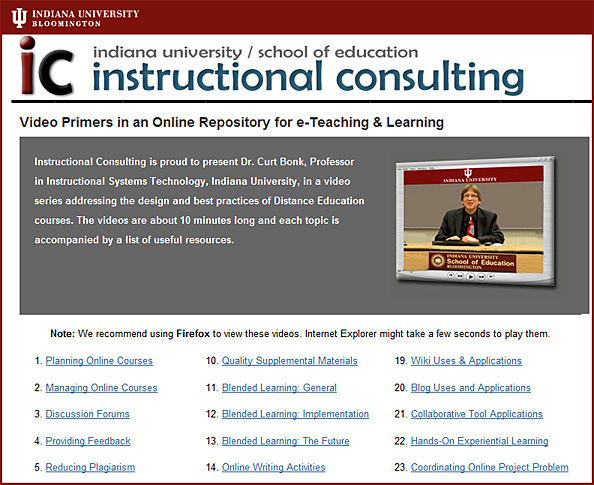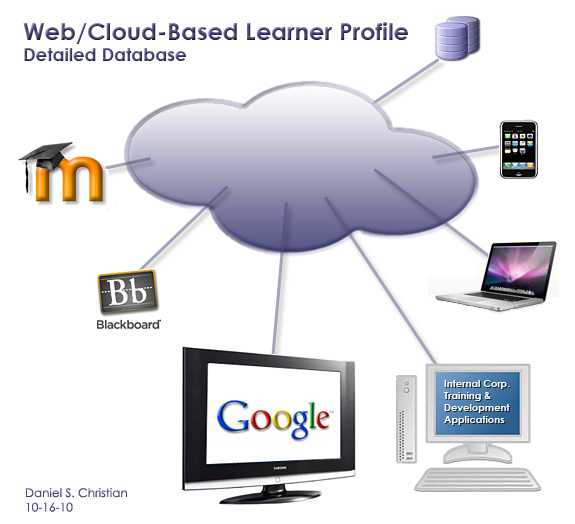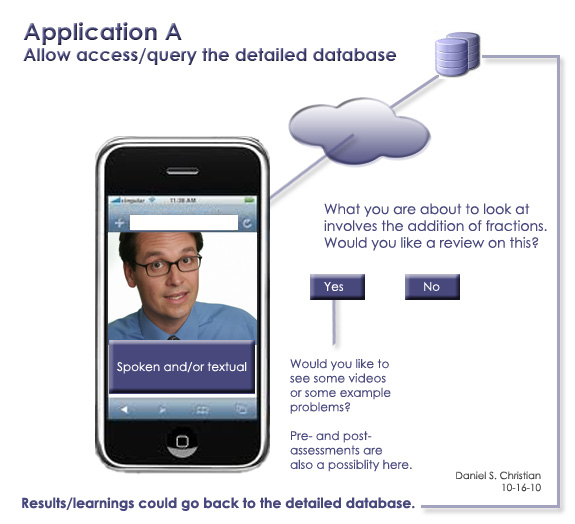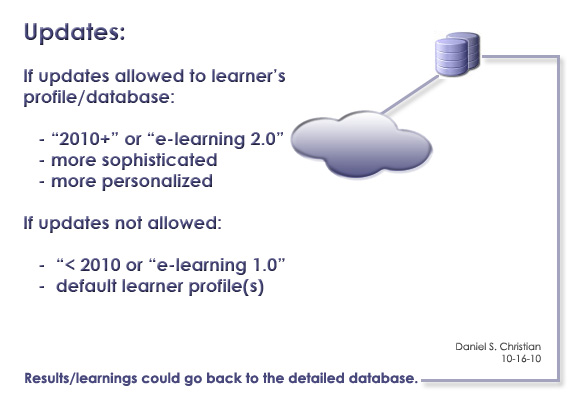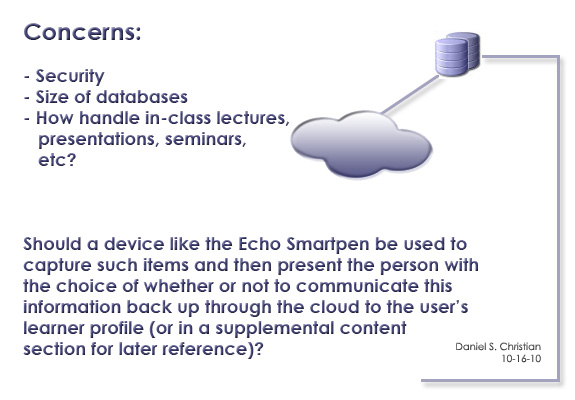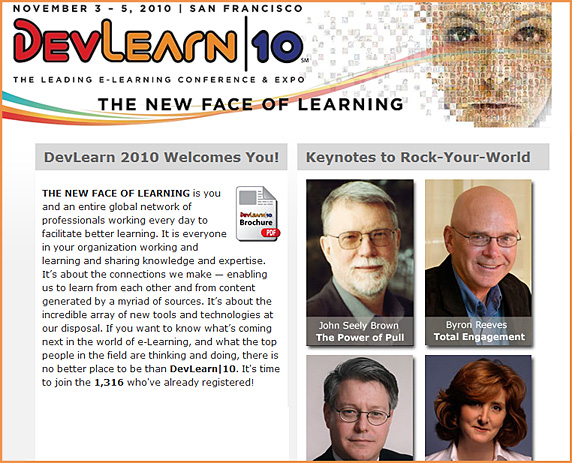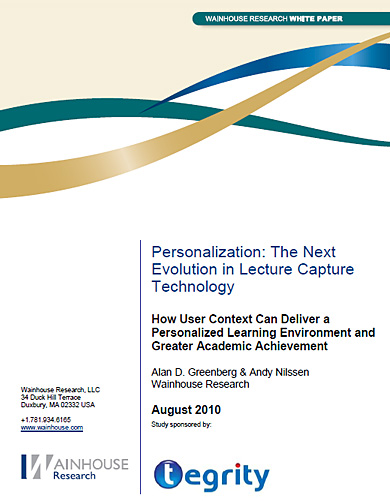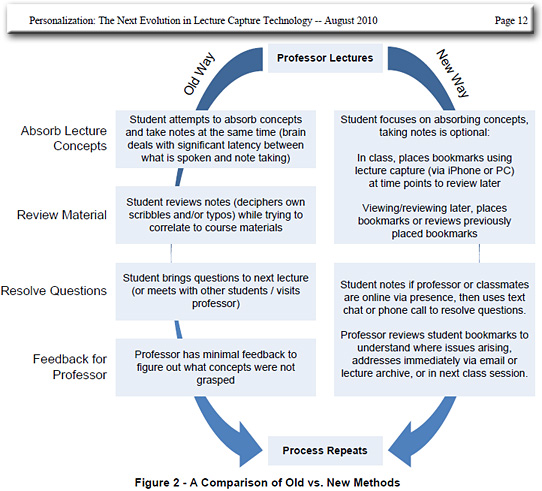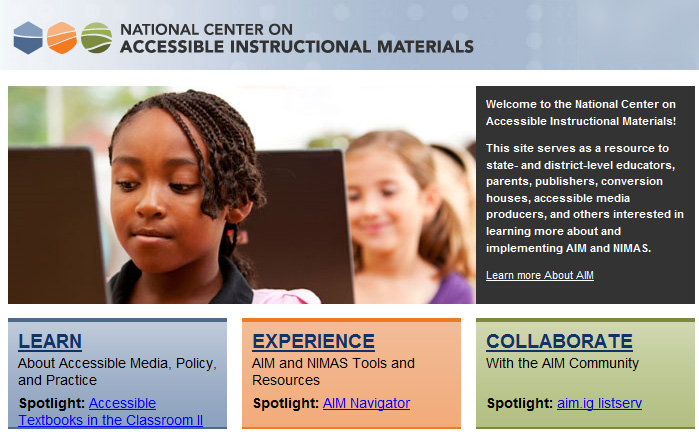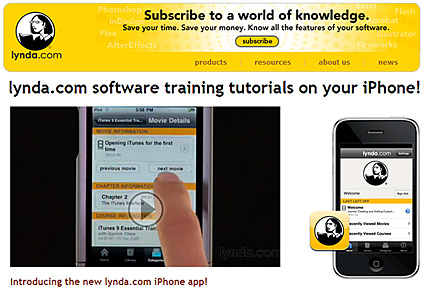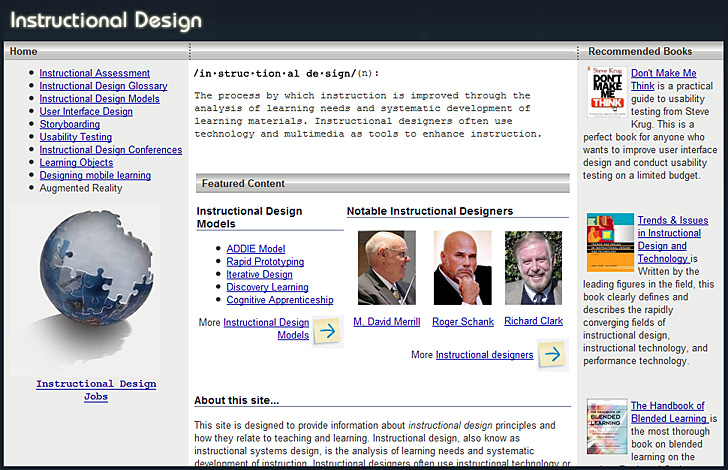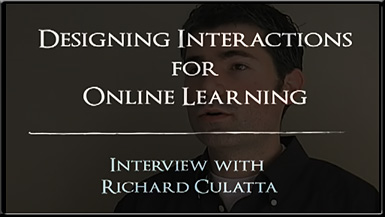Captivate 5: Branching — from Adobe
.
Resource from George Siemens who mentions:
I recently encountered this group of 27 online teaching and learning video resources, featuring Curt Bonk. Each video runs approximately 10 minutes and serves as an introduction to key ideas in planning and delivery technology enhanced learning.
Seven steps for using more rich media in learning — from eLearning Roadtrip by Ellen Wagner
The test has been canceled — from Boston.com by Keith O’Brien
Final exams are quietly vanishing from college
The change, which was first reported in Harvard Magazine, is not a statement on the value of final exams one way or the other, Harris said. But the shrinking role of big, blockbuster tests at Harvard and colleges elsewhere is raising serious pedagogical questions about 21st century education: How best do students learn? And what’s the best way to assess that? Is the disappearance of high-stakes, high-pressure final exams a sign that universities are failing to challenge today’s students, or is it just a long overdue acknowledgment that such tests aren’t always the best indicator of actual knowledge?
From DSC:
Perhaps like many others, I don’t remember a lot from the final exams taken during my college days. My hope is that whatever methods we use, we can foster deeper, longer-lasting ROI’s from students’ studying time. We can create more “hooks” on which to hang things 5-10 years down the line (if that’s possible these days!). One thought along these lines, is to use the ideas of story, play, and promoting the creativity of our students.
The greatest teacher of all time used story — in the form of parables — all the time. I’ll bet that many of us can still recall to this day the parable of the sower, or the prodigal son…the good Samaritan or the lost coin. With enough repetition, we remember these stories and the deeper meaning behind them. They provide hooks to hang other things upon (i.e. scaffolding).
Instructional Design-related items from Capella University
- Instructional Design Sites:
- Professional Associations
- Additional Reading
Textbooks in IDOL Specialization Courses
ED 5802 Principles of Instructional Design
Smith, P.L. & Ragan, T.J. (2005). Instructional design (3rd ed.). Hoboken, NJ: Wiley. ISBN:
0471393533.
Ertmer, P.A. & Quinn, J. (2007). The ID casebook: Case studies in instructional design (3rd ed.).
Upper Saddle River, NJ: Pearson Education. ISBN: 0805857311. (Also used in ED7496.)
ED 5803 Processes of Instructional Design
Rothwell, W. J., & Kazanas, H. C. (2008). Mastering the instructional design process: A
systematic approach (4th ed.). San Francisco, CA: Pfeiffer. ISBN: 9780787996468.
ED5804 The Delivery of Distance Education
Moore, M. G., & Kearsley, G. (2005). Distance education: A systems view (2nd ed.). Belmont,
CA: Thomson Wadsworth. ISBN: 0534506887.
ED5807 Design of Instructional Media
Lee, W. W., & Owens, D. L. (2004). Multimedia-based instructional design. San Francisco, CA:
Wiley & Sons. 9780787970697.
Mayer, R. E. (2005). The Cambridge handbook of multimedia learning. Santa Barbara, CA:
Cambridge University Press. 9780521547512.
ED5810 Project Management for e-Learning Development
Project Management Institute (2004). A guide to the project management body of knowledge (3rd
ed.). Charlotte, NC: Project Management Institute. ISBN: 193069945X.
Shackelford, B. (2002). Project managing e-learning. Washington, DC: ASTD Press.
ISBN:1562863290.
ED7212 Administration and Leadership of Distance Education Programs
Cashman, K. (2001). Leadership from the inside out: Becoming a leader for life. Provo, UT:
Executive Excellence Publishing. ISBN: 0975276506.
Shelton, K. & Saltsman, G. (Eds.) (2005). An administrator’s guide to online education.
Charlotte, NC: Information Age Publishing. ISBN: 1593114249.
Simonson, M., Smaldino, S., Albright, M., & Zvacek, S. (2006). Teaching and learning at a
distance: Foundations of distance education (3rd ed.). Upper Saddle River, NJ: Pearson
Prentice Hall. ISBN: 0131196308.
ED7496 Advanced Instructional Design
Ertmer, P.A. & Quinn, J. (2007). The ID casebook: Case studies in instructional design (3rd ed.).
Upper Saddle River, NJ: Pearson Education. ISBN: 0131717057.
Richey, R.C., & Klein, J.D. (2007). Design and development research: Methods, strategies, and
issues. Hillsdale, NJ: Erlbaum. ISBN: 0805857311.
ED7503 Instructional Media Tools
Fenrich, P. (2005). Creating instructional multimedia solutions: Practical guidelines for the real
world. Santa Rosa, CA: Informing Science Press. ISBN: 8392233719.
ED 7504 Leadership for Instructional Design
Fullan, M. (2001). Leading in a culture of change. San Francisco: Jossey-Bass. ISBN:
0787987662.
Rosenberg, M.J. (2000). e-Learning: Strategies for delivering knowledge in the digital age. New
York: McGraw-Hill. ISBN: 0071362681.
ED7505 Evaluation and Assessment of Instructional Design
Mager, R. F. (1997). Making instruction work: A step-by-step guide to designing and developing
instruction that works (2nd ed.). Atlanta, GA: The Center for Effective Performance. ISBN:
1879618028.
Kirkpatrick, D. L., & Kirkpatrick, J. D. (2006). Evaluating training programs: The four levels
(3rd ed.). San Francisco: Berrett-Koehler. ISBN: 1576753484.
ED7620 Theoretical Basis of Instructional Design
Reigeluth, C. M. (2009). Instructional design theories and models (Volume III): A new paradigm
of instructional theory. London: Taylor & Francis. ISBN: 9780805864564 .
ED7624 Theories of Learning and Instruction
Driscoll, M.P. (2005). Psychology of learning for instruction (3rd ed.). Boston, MA: Pearson
Education. ISBN: 0205375197
ED7814 Interface Design
Stone, D., Jarrett, C., Woodroffe, M., & Minocha, S. (2005). User interface design and
evaluation. San Francisco, CA: Morgan Kaufmann. ISBN: 0120884364.
ED 8810 Ethics and Social Responsibility in Distance Education
Spinello, R. (2002). Cyberethics: Morality and law in cyberspace. Sudbury, MA: Jones &
Bartlett. ISBN:0763700649.
Spinello, R. (2004). Readings in cyberethics (2nd ed.). Sudbury, MA: Jones & Bartlett.
ISBN:0763724106
Updated January 2010
In search of pioneering learning architects — Clive Sheperd
Meet the learning architect
A learning architect designs environments for learning. Like the architect who designs buildings, the learning architect will be responding to a specific brief:
- What is the nature of the learning requirement? What knowledge, skills and attitudes is the employer (the client) wishing to engender in the employees working within the business, division or department in question? How will this learning contribute to effective performance?
- What jobs are carried out in the target area? How many people are doing these jobs? What are these people like in terms of their demographics, prior learning, ability to learn independently, their motivation and preferences?
- Under what constraints must this learning take place? How geographically dispersed is the population? How much time and money is available? What equipment and facilities can be deployed to support the learning?
The learning architect also has a professional responsibility to their client. This requires them to be fully conversant with current thinking in terms of learning methods, acquainted with the latest learning media and up-to-date with developments in the science of learning. As none of these is intuitive and obvious, the client cannot be expected to have this expertise. And for this reason, it is neither sufficient nor excusable for the learning architect to act as order taker.
…
The learning architect does not need to directly facilitate learning or be present in all those situations in which learning might be taking place. However, they must know whether or not the learning that is occurring is in line with their plans and their client’s requirements, and that all this is happening at an acceptable speed and cost. And because the only constant in the modern workplace is change, they must be agile enough to respond to shifting requirements, new pressures and emerging opportunities.
From DSC:
I like this metaphor…it reminds me of a graphic that I developed a while back:










